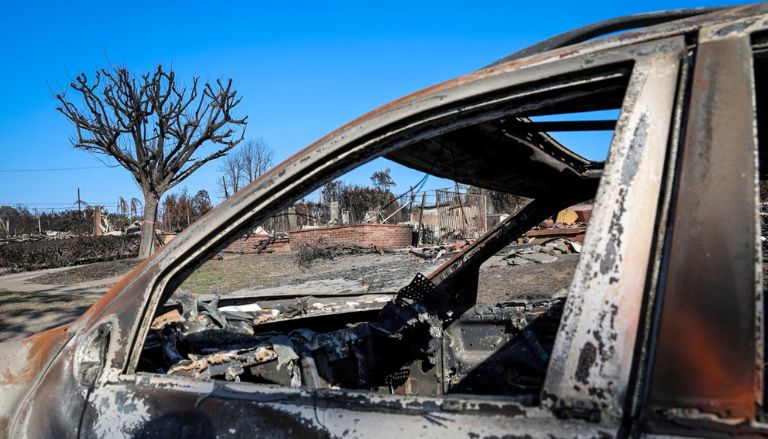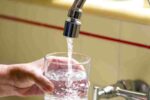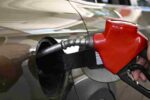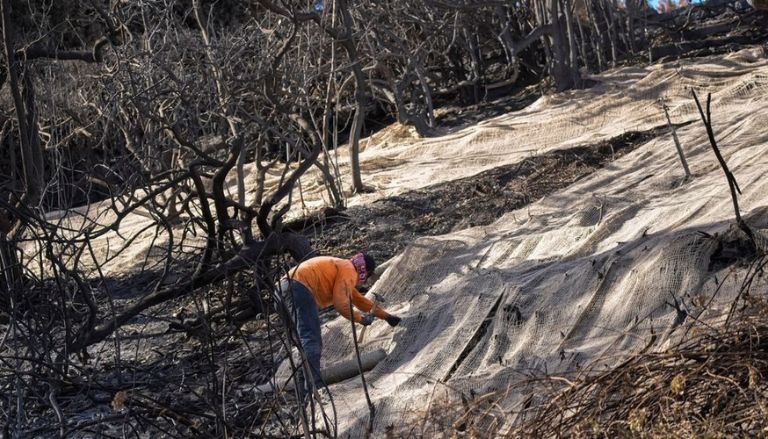As cleanup starts in the Los Angeles neighborhoods affected by wildfires, a major task is dealing with the many lithium-ion batteries that were burned in the fires.
Batteries power most plug-in hybrid cars and electric cars, as well as golf carts, e-bikes, computers, cell phones, and wireless earbuds. They are also used in power banks that offer extra energy during power blackouts, which are becoming more common in homes.
Lithium-ion batteries can catch fire or burst if they are damaged or get too hot. The heat can trigger a chain reaction, making the batteries heat up uncontrollably and catch fire. This can happen over days, weeks, or even months.
In Pacific Palisades and Altadena, the Palisades and Eaton fires have destroyed at least 12,000 buildings. Officials noted that these areas had more electric cars than usual.
Steve Calanog, who is in charge of cleaning up the Palisades and Eaton fires for the Environmental Protection Agency, said, “We believe this will likely be the biggest cleanup of lithium-ion batteries ever done in the world.”
However, that cleanup process is complicated and requires a lot of resources.
The California Office of Emergency Services has already sent hazmat teams to check homes for lithium-ion batteries and flag where they’re present. The EPA has a team called the Battery Rescue Team that will manage the collection of batteries. Chris Myers, an expert in lithium-ion batteries working on the EPA cleanup, said the collection process might begin as soon as Monday.
“Most likely, these batteries weren’t completely used up in the fire, so they’re damaged now and could be dangerous,” he said. Myers said that the batteries in hybrid and electric cars are well-protected, so even cars that were damaged in the fires might still have charged batteries.
Calanog said that handling the batteries needs a lot of skill and carefulness. The EPA team needs to wear flame-resistant clothes under their disposable protection suits. Masks cover their faces, and either come with insertable cartridges to filter out chemicals or connect to air tanks. The team secures the work area and keeps water nearby in case there are any fires.
Before sending collected batteries to a trash or recycling center, they must be drained of their charge so that they have none or very little left. To achieve this, Myers explained that the EPA will probably use a method created after the Maui wildfire in 2023. This method includes putting the batteries in a mixture of saltwater and baking soda. After the batteries run out of charge, they can either be crushed with a steamroller or sent to a facility in special boxes.
Lithium-ion batteries are becoming a bigger problem after wildfires, especially with more people buying hybrid and electric cars, especially in California. By 2026, 35% of new vehicles sold in the state must be zero-emission, and by 2035, all new vehicles need to be zero-emission.
In Los Angeles County, over 581,000 zero-emission vehicles, which include plug-in hybrids and fully electric cars, have been sold in the past 15 years. About 99,000 of those sales happened in 2024, according to the California Energy Commission. From 2010 to 2024, over 5,500 zero-emission cars were sold in Pacific Palisades.
Adam VanGerpen, a public information officer for the Los Angeles City Fire Department, said, “There are a lot of electric vehicles here, likely more than in other places.” “A lot of these people also had solar roofs and solar batteries for the wall power banks.”
Yuzhang Li, a UCLA professor of chemistry and biomolecular engineering, said that the most dangerous batteries are the ones in cars that were partly burned, not completely destroyed.
“If the electric vehicle has already caught fire and been completely burned, the risk is low because the fire likely destroyed the battery,” he said.
As officials start cleaning up after the Southern California fires, their top goal is to remove dangerous waste like asbestos, batteries, oil, and paint from homes. This is important because these materials can release harmful fumes.
Calanog said the whole process could take around six months.
Myers said that the battery recovery process will not delay the timeline, but managing the size of the task is definitely a big problem.
Calanog said that the EPA has not yet chosen where to dispose of the hazardous waste, and there are several possible locations.
VanGerpen mentioned that many places that handle hazardous waste are not in California, and they might not be able to take as much garbage as needed.
The waste must be cleared away before the officials can start the next step of cleaning up: removing the debris. VanGerpen advised locals not to search through the debris until their property is confirmed to be safe.
“People should not try to remove dangerous debris,” he said. “Common household items can be dangerous.”







Leave a Comment